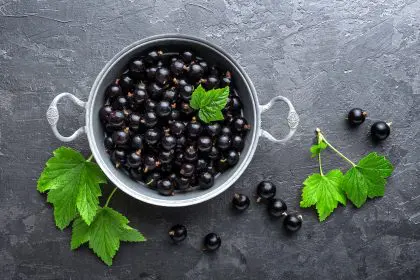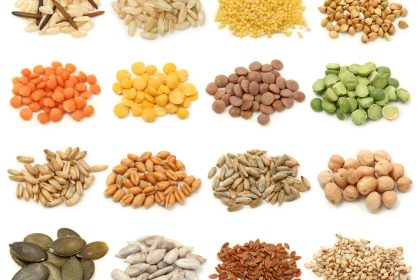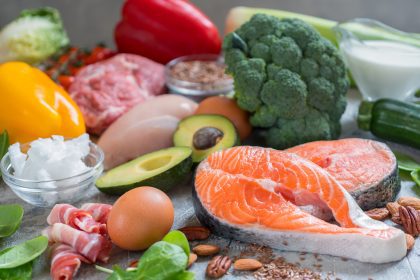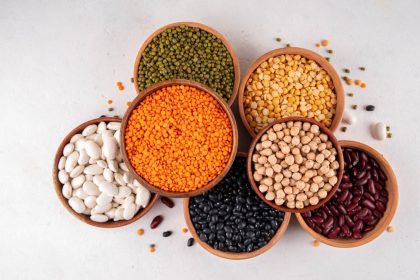Hidden within the vibrant colors and textures of plant foods lies a powerful group of compounds that could dramatically reduce the risk of two of America’s most devastating health conditions. These natural substances, working quietly within fruits, vegetables, nuts, and grains, offer protection that extends far beyond basic nutrition.
Phytosterols represent one of nature’s most effective cholesterol-fighting mechanisms, yet most people remain unaware of their existence or their remarkable ability to safeguard cardiovascular and metabolic health. Understanding how these plant compounds work and which foods contain the highest concentrations could be the key to preventing chronic diseases that affect millions.
The connection between what we eat and our long-term health outcomes has never been clearer, with plant-based compounds emerging as some of the most potent protective agents available through diet. These natural substances work through multiple pathways to shield the body from disease development while supporting optimal function of crucial biological systems.
The hidden epidemic of interconnected diseases
Type 2 diabetes and heart disease share a complex relationship that makes them particularly dangerous when they occur together. The metabolic changes that lead to diabetes often create conditions that promote cardiovascular problems, while heart disease can worsen blood sugar control and accelerate diabetes progression.
More than one in seven American adults currently lives with type 2 diabetes, with rates continuing to climb across all age groups. The financial and personal costs of managing diabetes extend far beyond the individual, creating a healthcare burden that affects families and communities nationwide.
Heart disease remains the leading cause of death in the United States, claiming more lives than all forms of cancer combined. The risk factors for heart disease overlap significantly with those for diabetes, including inflammation, insulin resistance, and cholesterol imbalances that can be addressed through dietary interventions.
The cascade effect of these conditions means that preventing one often helps prevent the other, making targeted nutritional approaches particularly valuable for long-term health outcomes. Plant compounds offer a natural way to address multiple risk factors simultaneously through a single dietary strategy.
Understanding phytosterols and their protective mechanisms
Phytosterols are naturally occurring compounds found in plant cell membranes that structurally resemble human cholesterol. This similarity allows them to compete with dietary cholesterol for absorption in the intestines, effectively blocking cholesterol uptake and reducing blood cholesterol levels.
When consumed regularly, phytosterols can reduce low-density lipoprotein (LDL) cholesterol absorption by up to 15%, creating significant improvements in cardiovascular risk profiles. This cholesterol-lowering effect occurs without interfering with the absorption of beneficial high-density lipoprotein (HDL) cholesterol.
Beyond cholesterol management, phytosterols demonstrate anti-inflammatory properties that help reduce chronic inflammation throughout the body. This systemic inflammation reduction benefits multiple organ systems and can help prevent the inflammatory processes that contribute to both diabetes and heart disease development.
The compounds also appear to influence insulin sensitivity, helping cells respond more effectively to insulin and maintain better blood sugar control. This improved insulin function reduces the metabolic stress that can lead to type 2 diabetes while supporting cardiovascular health through better glucose regulation.
1. Nuts and seeds as phytosterol powerhouses
Tree nuts and seeds contain some of the highest concentrations of phytosterols available in whole foods, making them excellent additions to any health-protective diet. Almonds, walnuts, pistachios, and sunflower seeds provide substantial amounts of these beneficial compounds along with healthy fats and protein.
The combination of phytosterols with beneficial fats in nuts creates a synergistic effect that enhances cholesterol-lowering benefits while providing sustained energy and satiety. Regular nut consumption has been associated with reduced cardiovascular disease risk and better long-term weight management.
Sesame seeds and tahini (sesame seed paste) contain particularly high levels of phytosterols, making them valuable additions to Mediterranean and Middle Eastern dietary patterns that have demonstrated protective effects against chronic diseases. Even small amounts of these foods can contribute meaningful phytosterol intake.
Ground flaxseeds offer both phytosterols and omega-3 fatty acids, creating a dual benefit for heart health and inflammation reduction. The grinding process makes phytosterols more bioavailable, maximizing their protective potential when incorporated into smoothies, yogurt, or baked goods.
2. Whole grains for sustained protection
Whole grains provide phytosterols along with fiber, B vitamins, and minerals that support metabolic health and blood sugar regulation. The outer bran layer of grains contains the highest concentrations of phytosterols, making whole grain products significantly more beneficial than refined alternatives.
Brown rice, quinoa, and oats offer substantial phytosterol content while providing complex carbohydrates that help maintain steady blood sugar levels throughout the day. This combination supports both diabetes prevention and cardiovascular health through improved metabolic function.
Wheat germ, often removed during grain processing, contains exceptionally high levels of phytosterols and can be easily added to cereals, smoothies, or baked goods. Just a few tablespoons of wheat germ can significantly boost the phytosterol content of meals.
Ancient grains like amaranth, millet, and teff provide phytosterols along with unique protein profiles and mineral compositions that support overall health. These grains offer variety in texture and flavor while contributing to protective compound intake.
3. Vegetable oils and their concentrated benefits
Unrefined plant oils contain the highest concentrations of phytosterols available in food sources, with cold-pressed varieties retaining more beneficial compounds than highly processed alternatives. Olive oil, particularly extra virgin varieties, provides substantial phytosterols along with antioxidants and monounsaturated fats.
Avocado oil offers excellent phytosterol content with a high smoke point that makes it suitable for cooking applications where other beneficial oils might be damaged by heat. The neutral flavor profile makes it versatile for both cooking and salad dressings.
Sunflower and safflower oils contain impressive phytosterol levels, though choosing cold-pressed versions ensures maximum retention of beneficial compounds. These oils work well in baking applications and can replace less healthy fats in recipes.
Sesame oil provides concentrated phytosterols along with distinctive flavor compounds that enhance the taste of stir-fries and Asian-inspired dishes. Even small amounts used for flavoring can contribute meaningful phytosterol intake to meals.
4. Legumes for comprehensive nutrition
Beans, lentils, and peas provide phytosterols alongside protein, fiber, and minerals that support blood sugar regulation and cardiovascular health. The combination of these nutrients creates a particularly beneficial food group for diabetes and heart disease prevention.
Soybeans and soy products like tofu and tempeh contain higher phytosterol levels than most other legumes, making them valuable protein sources for plant-based diets. The processing methods used for traditional soy foods help retain beneficial compounds while improving digestibility.
Black beans, kidney beans, and chickpeas offer substantial phytosterol content along with complex carbohydrates that provide sustained energy without causing blood sugar spikes. Regular legume consumption supports healthy weight management and metabolic function.
Split peas and lentils cook quickly and absorb flavors well, making them easy to incorporate into soups, stews, and grain dishes. Their high fiber content works synergistically with phytosterols to support cholesterol management and digestive health.
5. Fruits and vegetables for daily protection
While fruits and vegetables generally contain lower phytosterol concentrations than nuts and oils, their regular consumption contributes to overall intake while providing numerous other health benefits. Avocados stand out among fruits for their exceptionally high phytosterol content.
Brussels sprouts, broccoli, and cauliflower from the cruciferous vegetable family provide phytosterols along with compounds that support detoxification and anti-inflammatory processes. These vegetables offer multiple pathways for disease prevention beyond their phytosterol content.
Oranges and other citrus fruits contribute phytosterols while providing vitamin C and flavonoids that support immune function and cardiovascular health. The combination of these compounds creates synergistic benefits that exceed what individual nutrients might provide alone.
Leafy greens like spinach and kale offer phytosterols alongside folate, magnesium, and antioxidants that support multiple aspects of metabolic and cardiovascular health. Their versatility makes them easy to include in various meal preparations throughout the day.
Maximizing absorption and effectiveness
The bioavailability of phytosterols can be enhanced through proper food preparation and combination strategies. Consuming phytosterol-rich foods with small amounts of healthy fats can improve absorption, as these compounds are fat-soluble.
Grinding or chopping nuts and seeds increases the surface area available for digestion, potentially improving phytosterol extraction and absorption. This preparation method works particularly well for flaxseeds and sesame seeds.
Cooking methods that preserve beneficial compounds while making foods more digestible can optimize phytosterol intake. Gentle cooking techniques like steaming or light sautéing maintain compound integrity while improving accessibility.
Spreading phytosterol-rich foods throughout the day rather than consuming large amounts at once may improve overall absorption and utilization. This approach also helps maintain steady blood levels of beneficial compounds.
Creating a phytosterol-rich eating pattern
Building meals around whole, minimally processed plant foods naturally increases phytosterol intake while providing numerous other health benefits. Focus on including a variety of plant foods at each meal to maximize both phytosterol content and overall nutritional value.
Breakfast options might include oatmeal topped with nuts and seeds, whole grain toast with avocado, or smoothies containing ground flaxseeds and nut butter. These combinations provide substantial phytosterol intake early in the day while supporting sustained energy levels.
Lunch and dinner can feature legume-based salads with olive oil dressing, whole grain bowls with nuts and seeds, or vegetable dishes prepared with beneficial oils. These meal patterns support both immediate satisfaction and long-term health goals.
Snack choices like raw nuts, seeds, or whole grain crackers with nut butter can help maintain steady phytosterol intake throughout the day while providing convenient, portable nutrition options.
Practical considerations for optimal intake
Achieving therapeutic levels of phytosterol intake through food alone requires consistent consumption of high-content foods throughout the day. Most therapeutic benefits appear with intakes of 2-3 grams daily, which exceeds what typical American diets provide.
Plant-based eating patterns naturally provide higher phytosterol intake than omnivorous diets, though both approaches can be optimized to include more beneficial plant compounds. Even modest increases in plant food consumption can provide meaningful health benefits.
Food storage and preparation methods can affect phytosterol content, with proper storage of nuts and seeds in cool, dark places helping preserve beneficial compounds. Fresh, minimally processed foods generally provide higher levels than highly processed alternatives.
Individual responses to phytosterol intake may vary based on genetics, existing health conditions, and overall dietary patterns. Consistent consumption over time appears more important than achieving specific daily targets, as benefits accumulate with regular intake.
Long-term health implications
The protective effects of phytosterols extend beyond immediate cholesterol lowering to include long-term disease prevention benefits that may not become apparent for years or decades. This delayed benefit emphasizes the importance of early adoption of protective dietary patterns.
Regular phytosterol consumption may help slow the progression of existing cardiovascular disease while reducing the risk of diabetes-related complications. These compounds work as part of a comprehensive approach to chronic disease management and prevention.
The anti-inflammatory effects of phytosterols may contribute to healthy aging by reducing the chronic inflammation that accelerates age-related disease development. This broader benefit supports multiple aspects of health beyond diabetes and heart disease prevention.
Incorporating phytosterol-rich foods into daily eating patterns represents a sustainable, enjoyable approach to long-term health protection that doesn’t require dramatic lifestyle changes or expensive supplements. The key lies in understanding which foods provide the greatest benefits and finding ways to include them regularly in appealing, satisfying meals that support both immediate and long-term health goals.
















